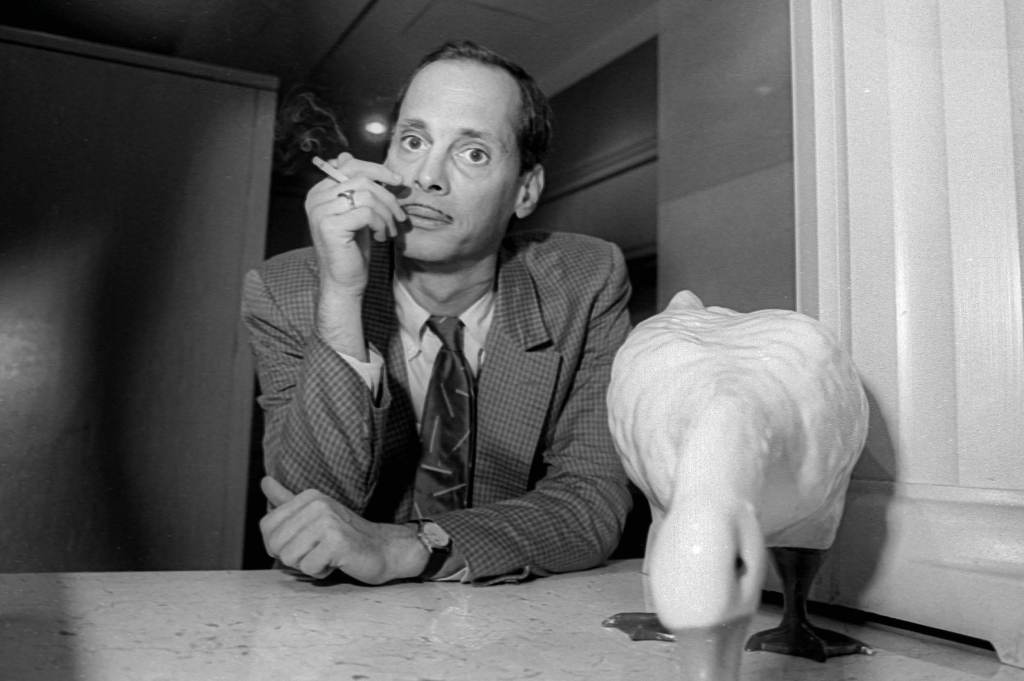A decade or so ago, I was on the phone with the filmmaker John Waters, discussing Juggalos, Jesus and Justin Bieber, when I called someone “white trash.” The once-cult-now-mainstream director cut me off. I don’t remember exactly what he said — the transcript is long since deleted — but Waters berated me, called me racist, and rehashed some version of his 1994 statement that “talking trash about ‘white trash’ is ‘the last racist thing you can say and get away with.’”
The white trash in me wanted to cuss Waters out — I grew up in Florida, my father bred dogs for a living, and my mother grew up in a trailer park and taught us children “never care what other people think about you” — but Waters was the man who directed Divine to eat dog shit in Pink Flamingos (1972)! He was the doyen of white trash, especially gay white trash. I was told my whole life that he was the be-all, end-all of our people, especially if I was a gay member of our people. It felt like disrespecting my elders.
But Waters never impressed me. I didn’t particularly care for his films, especially the critically acclaimed, supposedly progressive later movies. Hairspray (1988) offers as much depth about the civil rights movement as a Disney Channel Original Movie released during Black History Month, and anyone who says Traci Lords acts as well as Johnny Depp in Cry-Baby (1990) is blind. Although the musical Hairspray delighted me as an eleven-year-old in 2002 (what little gay boy doesn’t like Tiger Beat, dream boys like Corny Collins and fat girls belting songs like “Good Morning, Baltimore”?), it thrilled me the same way a Disney musical would. It was shiny. It was fun. It was not a cross between art and the humor of white trash America. WWE SmackDown-at-the-Metropolitan-Opera Hairspray is not. Even as a kid, I was confused when, during the intermission, my aunt pointed at the skinny grandpa in a suit sitting next to us. “That’s the edgy artist John Waters,” she said. “The king of trash. He wrote this.” To me, he looked like a suburban dandy, not transgressive.
But as LA’s Academy Museum, the Valhalla of movie exhibits and exhibitionism and the museum of the Academy of Motion Picture Arts and Sciences, unveils its John Waters: Pope of Trash exhibit, it’s time to ask — what trailer park anointed this upper-middle class hussy the representative for white trash Americans? And is his so-called art even that good?
Like most of his characters, Waters hails from Baltimore. Unlike his characters, he hails from the right side of the tracks. His 1981 memoir, Shock Value, recounts how in contrast to respectable, Catholic, Leave It to Beaver-style parents, he enjoyed taking “the cheapest girls” on dates. Waters wasn’t attracted to the girls. (He’s gay, don’t you know.) But he was attracted to offending his well-to-do parents.
Unlike most teens, Waters didn’t grow out of his rebellion. In the Sixties, he embarked on a career creating what a 1981 Film Comment article called “the trashiest movies in the history of cinema.” His first short film, Eat Your Makeup (1968), depicted drag actress Divine imagining herself as Jackie Kennedy. She wears a pillbox hat and matching coat and rides in a convertible as a JFK-look-alike gets shot. Shot only a few years after the president’s death, it’s the definition of “too soon,” and you laugh because it is too soon. It’s the outrageous humor you hear at trucker bars or at the twenty-first century’s Gathering of the Juggalos, but Waters’s swooping, newsreel-style, black-and-white cinematography stops your laughter. Suddenly, you’re pulled into a dream-like atmosphere that makes you ponder why the tragic, historic assassination felt so spectacular. Eat Your Makeup accomplishes what Waters said about Rainer Werner Fassbinder in a 1977 Provincetown magazine interview: it “manages to [be] an art film and trash film at the same time.”
The same cannot be said about most of Waters’s oeuvre. Pink Flamingos starts with a brilliant conceit —two criminals try to out-trash Babs Johnson (Divine), a woman known as “the filthiest person alive” — but by the time Babs is blowing her son, you’re bored by the carnival of shock. It’s like watching too many hours of Jackass.
Waters’s only great film is Female Trouble (1974). Depicting the life of criminal Dawn Davenport (also Divine), it explores why criminals fascinate us. During its iconic Christmas scene, Dawn sits on a couch in front of suburban wallpaper; the home feels like a Hallmark card. Her father hands her a gift. She opens it, pulls out shoes, and screams: “Those aren’t the right ones!” She wants cha-cha heels.
“Nice girls don’t wear cha-chas,” the father says.
“You’ve ruined my Christmas!” she yells, as she stomps on box after box of Christmas gifts.
Dawn’s tantrum is filled with so much anarchist glee, you can’t help wanting to join her — and wondering why her deviousness is so thrilling. Female Trouble is the sole time Waters has explored a serious, scary question. The type of question white trash isn’t afraid to scream at each other, regardless of how it could offend polite society.
Waters created these films during the rock ’n’ roll, rebellious Seventies. By the time Ronald Reagan and AIDS rolled around, he pivoted to casting Divine in suburban fare: the aforementioned Hairspray and the faintly edgy Douglas Sirk parody Polyester (1981), in which Divine plays a housewife dealing with her husband’s porn business and son’s glue addiction. They’re fine, but they’re only slightly more outrageous than Bette Midler’s Eighties films like Down and Out in Beverly Hills (1986) and Ruthless People (1986).
When the Nineties and early Aughts swung back to outrage, Waters returned to filth spectacles like Pecker (1998) and A Dirty Shame (2004). He’s a man who follows the currents. But by then Divine was dead and replaced with Hollywood actors and the alleged criminal Patricia Hearst. As far as stunt-casting goes, it’s weak. Without a gun in her arms, Hearst lacks charisma. Abby Lee Miller, Ann Coulter and other participants in the Sharknado franchise’s stunt-casting deliver better acting. Hearst is hardly Divine, without whose gleeful, libertine acting style, Waters’s movies feel as special as Tom Green flicks. Which is to say, direct-to-VHS.
But by the time Bush was bombing Iraq, Waters was back in the Hairspray lane, this time on Broadway, and he didn’t care to create new films. The subsequent Tony wins and Hollywood blockbuster remake lifted Waters into history. He was a legend. He rode those riches to sell art to rich people and write cliché after cliché in a series of repetitive, lazy books. Take Carsick (2014). It’s premised on his hitchhiking across America but two-thirds of the book consists of him dreaming about what it would be like to hitchhike. Critics were too scared to critique him. Myself included, at the time.
Today, Waters sells art at galleries, gives speeches and sells career-retrospective book after career-retrospective book. He knows his audience, and during the Trump administration, he knew to critique the commander-in-chief, telling the Guardian, “Trump ruined bad taste.” He’s argued he loves his trashy characters, whereas Trump posits hate. But what’s the difference between Dawn Davenport stomping around and the QAnon shaman storming through the Capitol and insurrectionists shitting on Nancy Pelosi’s desk for the CNN cameras? The entire Trump era resembled a Waters film, but Waters — like many, including myself — hates Trump. It’s a difficult yet interesting question that Waters avoids but an actually transgressive artist might explore. None of us wants to answer it, but actual trashy Americans — the unafraid-of-giving-offense — would love it.
But the mainstream isn’t interested in interesting questions. (Just look how the Met Gala ignored Trump during its camp-themed ball!) So it’s fitting that the Motion Picture Academy — the lamest of mainstream institutions — is celebrating Waters’s garbage dump of a career. The gallery displays Divine’s wig from the original Hairspray, the electric chair from Female Trouble and a pink trailer. It’s the climax of Waters’s journey from alleged outsider artist to crème-de-la-respectable. Like Waters’s films, it makes me gag, and not in a good way. Looking at the Academy’s press release, I finally understand those climate protesters who throw paint on Renaissance masterpieces. Maybe I’ll throw some paint on a trailer when I visit the exhibit.
This article was originally published in The Spectator’s November 2023 World edition.


















